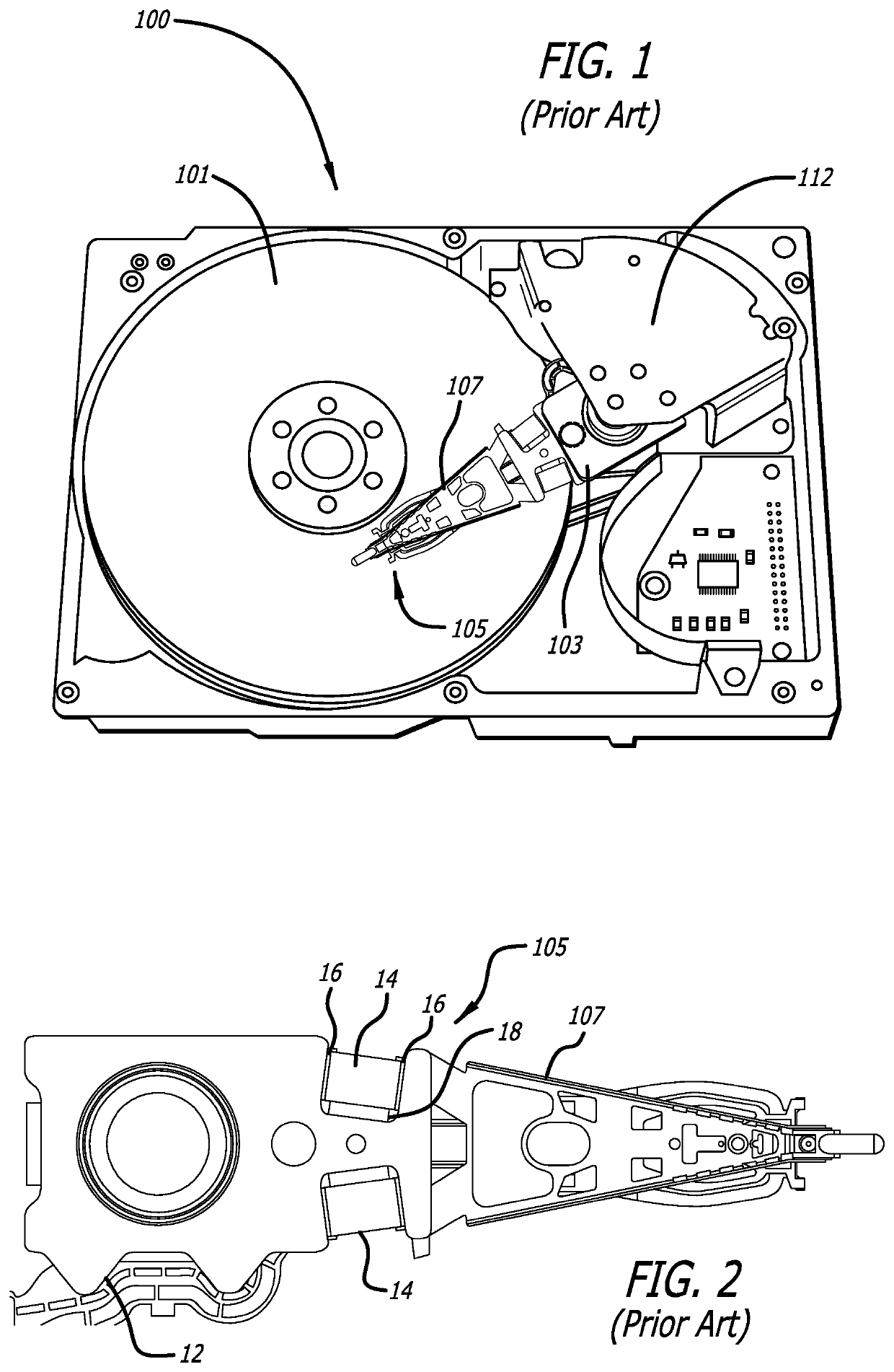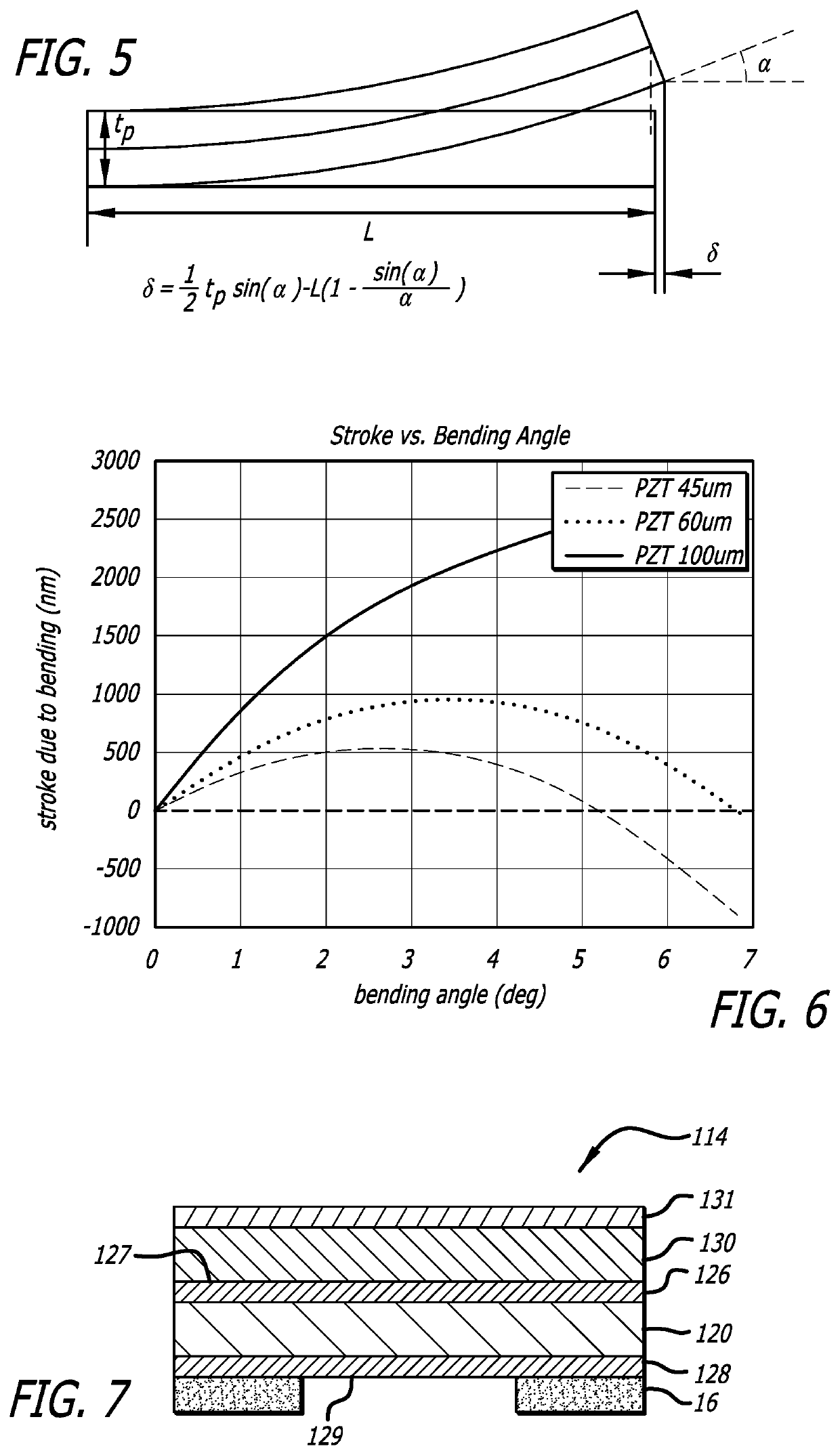Multi-layer PZT microactuator with active PZT constraining layers for a DSA suspension
a microactuator and active pzt technology, applied in the direction of maintaining head carrier alignment, recording information storage, instruments, etc., can solve problems such as stroke length loss
- Summary
- Abstract
- Description
- Claims
- Application Information
AI Technical Summary
Benefits of technology
Problems solved by technology
Method used
Image
Examples
Embodiment Construction
[0066]FIG. 7 is a side sectional view of a PZT microactuator assembly 114 having a constraining layer 130 bonded thereto in accordance with an embodiment of present invention. In keeping with the orientation shown in the figure, the side of the PZT which is bonded to the suspension will be referred to as the bottom side 129 of PZT 114, and the side of the PZT away from the side at which the PZT is bonded to the suspension will be referred to as the top side 127. According to the invention, one or more constraining layers or constraining elements 130 is bonded to the top side 127 of microactuator PZT element 120. The constraining layer 130 preferably comprises a stiff and resilient material such as stainless steel and is preferably bonded directly to the top surface 127 of the PZT element 120 including its top electrode 126, or the SST material may itself serve as the top electrode thus making it unnecessary to separately metalize the top surface. The constraining layer 130 is stiff ...
PUM
| Property | Measurement | Unit |
|---|---|---|
| thickness | aaaaa | aaaaa |
| length | aaaaa | aaaaa |
| thick | aaaaa | aaaaa |
Abstract
Description
Claims
Application Information
 Login to View More
Login to View More - R&D
- Intellectual Property
- Life Sciences
- Materials
- Tech Scout
- Unparalleled Data Quality
- Higher Quality Content
- 60% Fewer Hallucinations
Browse by: Latest US Patents, China's latest patents, Technical Efficacy Thesaurus, Application Domain, Technology Topic, Popular Technical Reports.
© 2025 PatSnap. All rights reserved.Legal|Privacy policy|Modern Slavery Act Transparency Statement|Sitemap|About US| Contact US: help@patsnap.com



